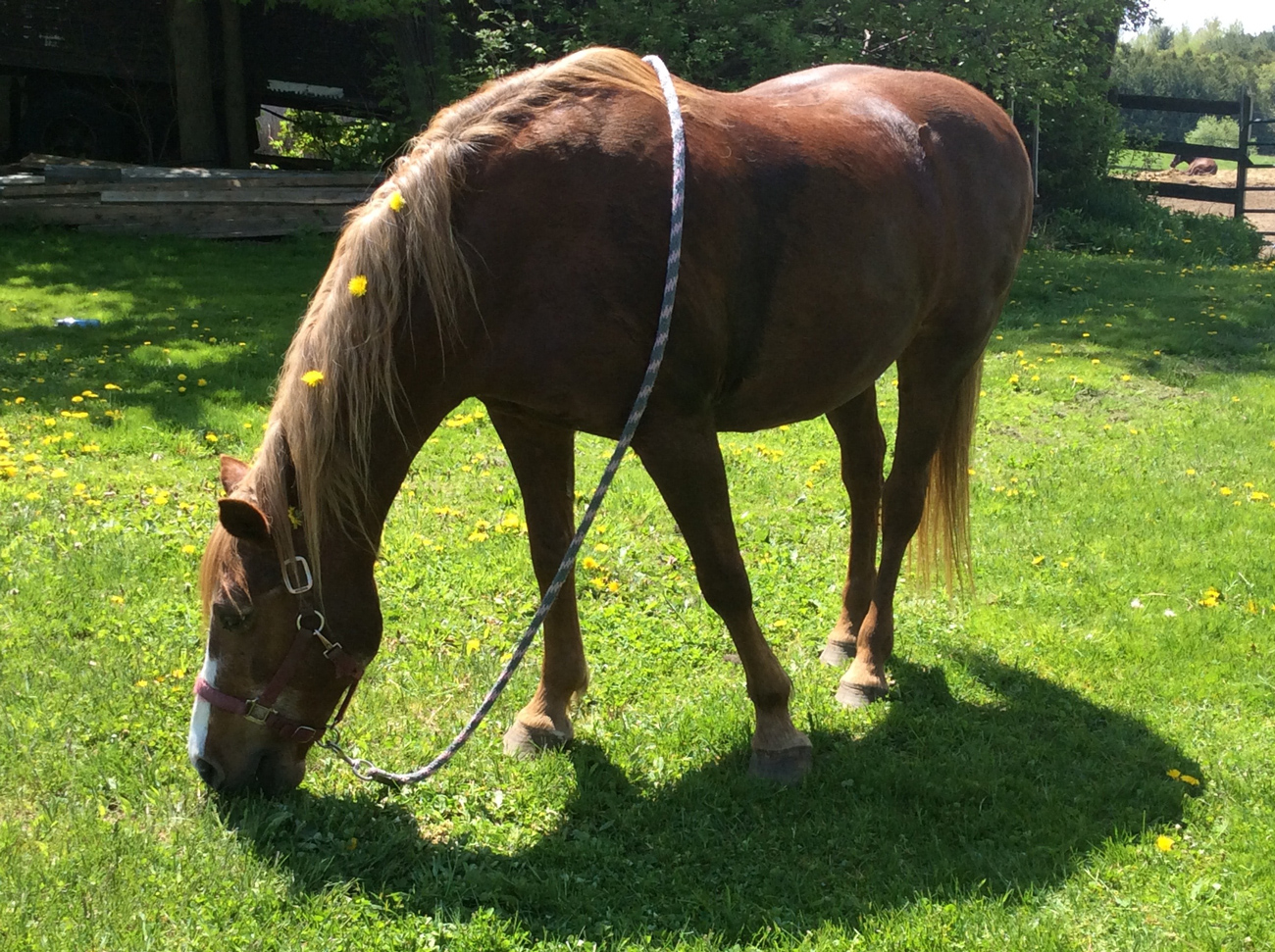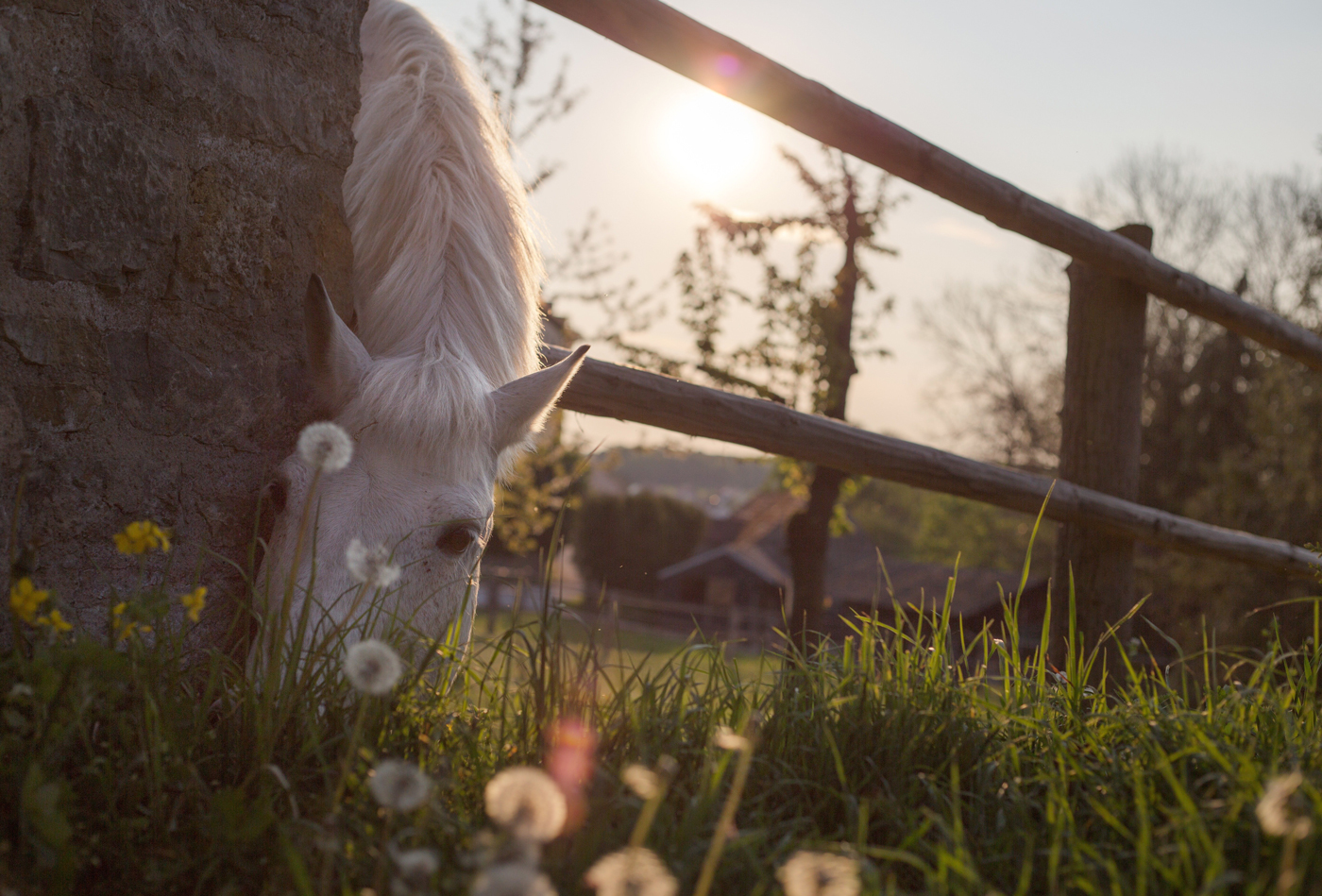There are few things better for your horse’s physical and mental health than being turned out regularly for free movement, natural grazing and socialising with their equine pals. However, this can be a source of concern, particularly when horses are feeding on rich spring grass, as some can have a tendency to over-indulge!
In addition to adequate horse insurance to deal with the problems extra weight gain may bring, investing in a grazing muzzle could be a wise addition to your horse management armoury.
What is a grazing muzzle?
Widely available on the market, grazing muzzles are used by horse owners as an aid to restrict grass intake.
Vital for horses who are gaining too much weight or have a tendency to suffer from laminitis, the muzzle works by having a hole at the bottom allowing the horse to continue to graze but cutting down considerably on the amount of grass consumed.
However, they are not to be used to prevent a horse from eating.
Grazing muzzles come in many different shapes and sizes to suit all horses but are all designed to do the same job. There’s a variety of designs and materials from which to choose, such as plastic, nylon, rubber and poly-resin.
Some muzzles are designed to be worn independently while others need to be attached directly to a headcollar. To provide comfort and prevent rubbing, padding is often included.

When to use a grazing muzzle?
When used responsibly, grazing muzzles can form a vital part of your equine companion’s weight loss programme.
Ultimately, however, weight loss can only be achieved through a combination of diet and exercise. This should be done under the supervision of your vet who can help you develop the appropriate weight management plan.
Never ignore the problem of weight gain in your horse as this could lead to bigger problems in the future. Prevention can be better than cure if you want to avoid a large claim on your insurance further down the line.
Such a plan should include:
- Assessing your horse’s current diet and removing any unnecessary supplements
- Checking you’re giving accurate daily rations of feed. Call your feed company helpline if you’re unsure and speak to a nutritionist.
- Monitoring your horse’s exercise levels and increasing if appropriate
- Ensuring suitability of current grazing during turnout
- Regular monitoring of weight and body condition
Restricting grass intake is also important if your horse is susceptible to laminitis. Laminitis is an inflammation of the laminae of the foot – the soft tissues that attach the bone of the foot to the hoof.
This inflammation can cause extreme pain and potentially crippling disease for the horse. In extreme cases a horse may have to be put down. If you need more information, the Blue Cross charity has some useful resources.
Be aware horse obesity can be associated with underlying metabolic issues your vet can test for. Always check your horse insurance first to see what procedures you’re covered for in your particular policy.
Whatever your decision under the Animal Welfare Act your horse’s five welfare needs must be met. These are:
- need for a suitable environment
- need for a suitable diet
- need to be able to exhibit normal behaviours
- need to be housed with, or apart, from other animals as necessary
- need to be protected from pain, suffering, injury and disease

Dos and don’ts of grazing muzzles
Do choose a muzzle that fits correctly and doesn’t rub. There should be one inch from the bottom of the muzzle to your horse’s lips and around three inches from the side of the muzzle to your horse’s face. Your horse still needs to be able to chew and drink water easily.
Do take your time – some horses accept a grazing muzzle the first time, while others need a bit longer to get used to it. Be patient, and if one muzzle doesn’t work, try another.
Do check the grazing muzzle regularly for signs of rubbing and debris.
Do consider a lined muzzle if your horse has sensitive skin or a fine coat as grazing muzzles can cause soreness.
Do inspect the pasture area carefully and avoid the risk of getting caught by fencing off potential hazards.
Do make the introduction of the grazing muzzle a positive experience by taking each step one at a time and providing a small healthy treat as a reward. Refer to the National Equine Welfare Council’s comprehensive grazing muzzle leaflet and video guidance.
Do take careful notice of signs of concern, discomfort or distress.
Do monitor your horse’s weight regularly to check on the value of the grazing muzzle.
Don’t assume that a grazing muzzle that’s a good fit for one horse will be appropriate for another.
Don’t leave a grazing muzzle on for 24 hours a day. Current advice does not recommend use of a grazing muzzle for over 10 to 12 hours per day. A horse must be given time to have salt and water freely and a bit of time to graze. If even some grass is a problem then give them time in the stable to eat some hay.
Don’t leave a horse turned out or left unsupervised for any length of time during its first session with a grazing muzzle.
Do put a sign up if your field is over-looked or has the public passing by, often members of the public who aren’t equine experienced, have been known to cut the muzzles off the horses as they aren’t aware they have the ability to eat and drink as normal. As we have mentioned earlier, the detriment to their health can be far greater with the muzzle removed when it comes to laminitis.
Horse insurance through Equesure
In addition to following guidance on grazing muzzles, another great way to protect your horse is to speak to Equesure about finding adequate horse insurance.
With over 60 years’ combined experience in the insurance market, our team of specialists can offer you a bespoke insurance policy with options tailored for the particular needs of your horse.
From leisure horses used for gentle hacks over the weekend, to horses used for competition and veteran horses, we can help you protect your forever friend against any potential risks.
Benefits of horse insurance include cover for vets’ fees up to £5,000 per incident, but with unlimited number of claims within the policy year. Give us a call today – we’ll be happy to talk you through the many choices of cover on offer to suit whatever your budget.
Get a quick quote today.
Policy benefits and features offered may very between insurance schemes or cover selected and are subject to underwriting criteria. Information contained within this article is accurate at the time of publishing but may be subject to change.





